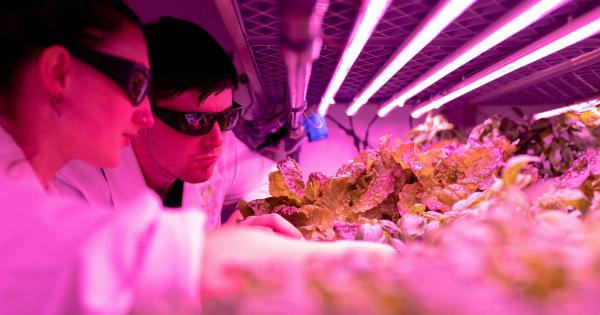The year 2020 has taught us many lessons, and one of the most important ones is the need for preventive measures to avoid future pandemics.
The COVID-19 pandemic has spread around the world, causing millions of deaths and a significant impact on the global economy. However, this pandemic has also sparked innovation and collaboration in the scientific community.
The Importance of Anticipating Future Pandemics
It is not a matter of if but when the next pandemic will occur. Therefore, it is essential to anticipate future pandemics to prevent them from becoming catastrophic.
The COVID-19 pandemic has shown that even highly developed countries are not ready to handle a global health crisis. The lack of preparedness has resulted in a slower response time, limited resources, and inadequate preventive measures.
The Role of Innovation in Anticipating Future Pandemics
The COVID-19 pandemic has accelerated innovation in the scientific community. The development of vaccines and new treatments has been unprecedented. This innovation needs to continue to anticipate future pandemics.
Scientists need to focus on developing new technologies that can detect and prevent the spread of infectious diseases.
New Technologies in Anticipating Future Pandemics
There are several new technologies that can be used to anticipate future pandemics, such as:.
Artificial Intelligence
Artificial Intelligence (AI) can be used to analyze large amounts of data quickly and accurately. It can detect patterns in disease outbreaks, predict the spread of infections, and suggest preventive measures.
AI can also be used to develop new treatments and vaccines.
CRISPR
CRISPR is a revolutionary gene-editing technology that can target specific genes. It can be used to modify the genes of viruses, making them less virulent and easier to treat. CRISPR can also be used to develop new treatments and vaccines.
Blockchain
Blockchain technology can be used to track the spread of infectious diseases. It can create a secure and transparent database of infected individuals, allowing for faster and more effective contact tracing.
It can also be used to distribute vaccines and other medical supplies.
Virtual Reality
Virtual Reality (VR) can be used to simulate infectious disease outbreaks. It can help scientists understand how diseases spread and how preventive measures can be implemented.
VR can also be used to train healthcare professionals in dealing with infectious diseases.
Gene Sequencing
Gene sequencing technology can be used to identify new viruses that may cause pandemics. It can also be used to track the evolution of viruses and develop new treatments and vaccines.
Conclusion
The COVID-19 pandemic has shown that we need to anticipate future pandemics to avoid a catastrophic global health crisis.
Scientists need to continue innovating to develop new technologies that can help detect and prevent the spread of infectious diseases. AI, CRISPR, blockchain, VR, and gene sequencing are just a few examples of technologies that can be used to anticipate future pandemics.
It is time for governments and private companies to invest in these technologies to build a more prepared world. Innovation is the key to anticipating future pandemics, and we need to continue working together to be ready for whatever comes next.






























